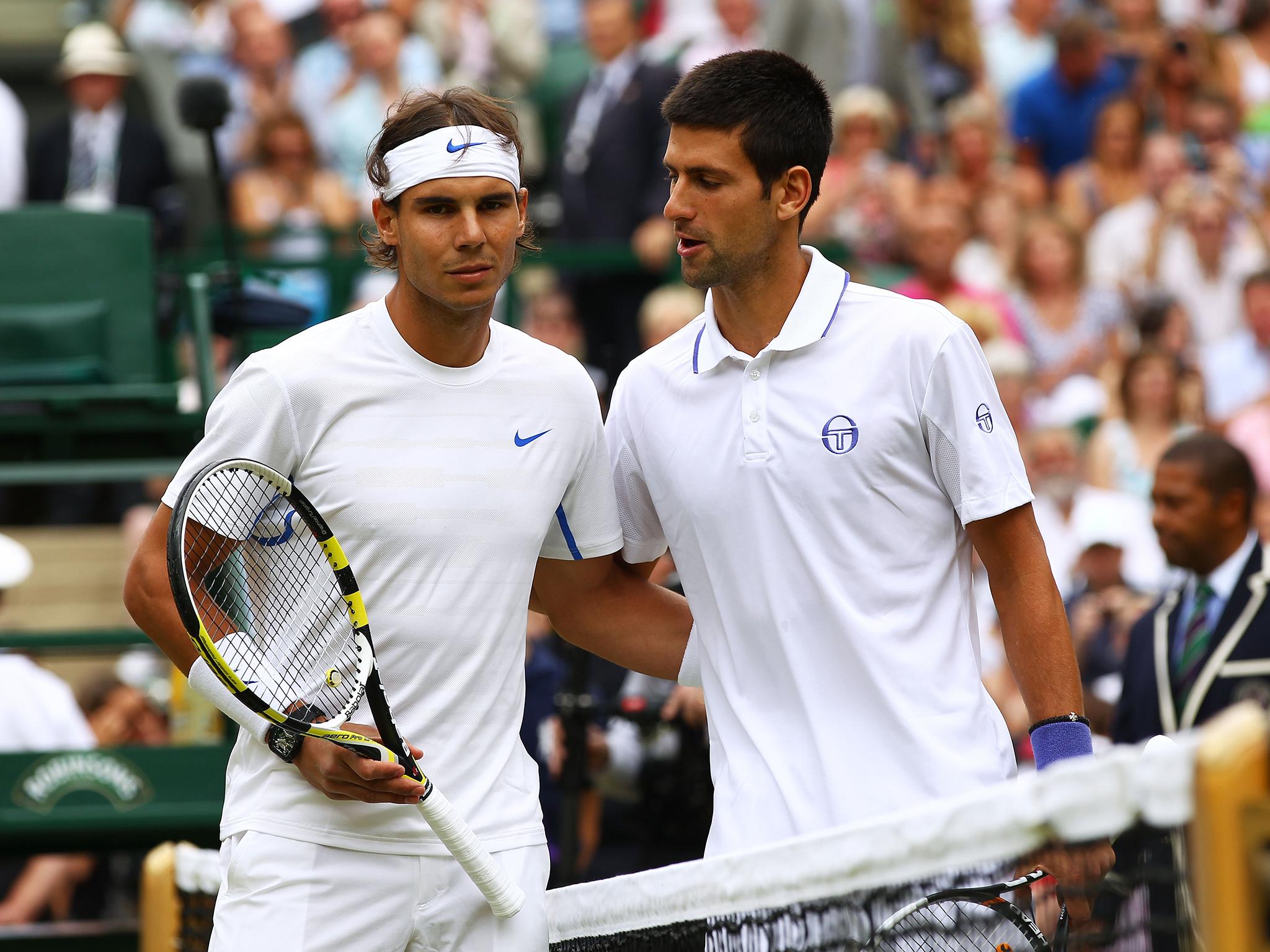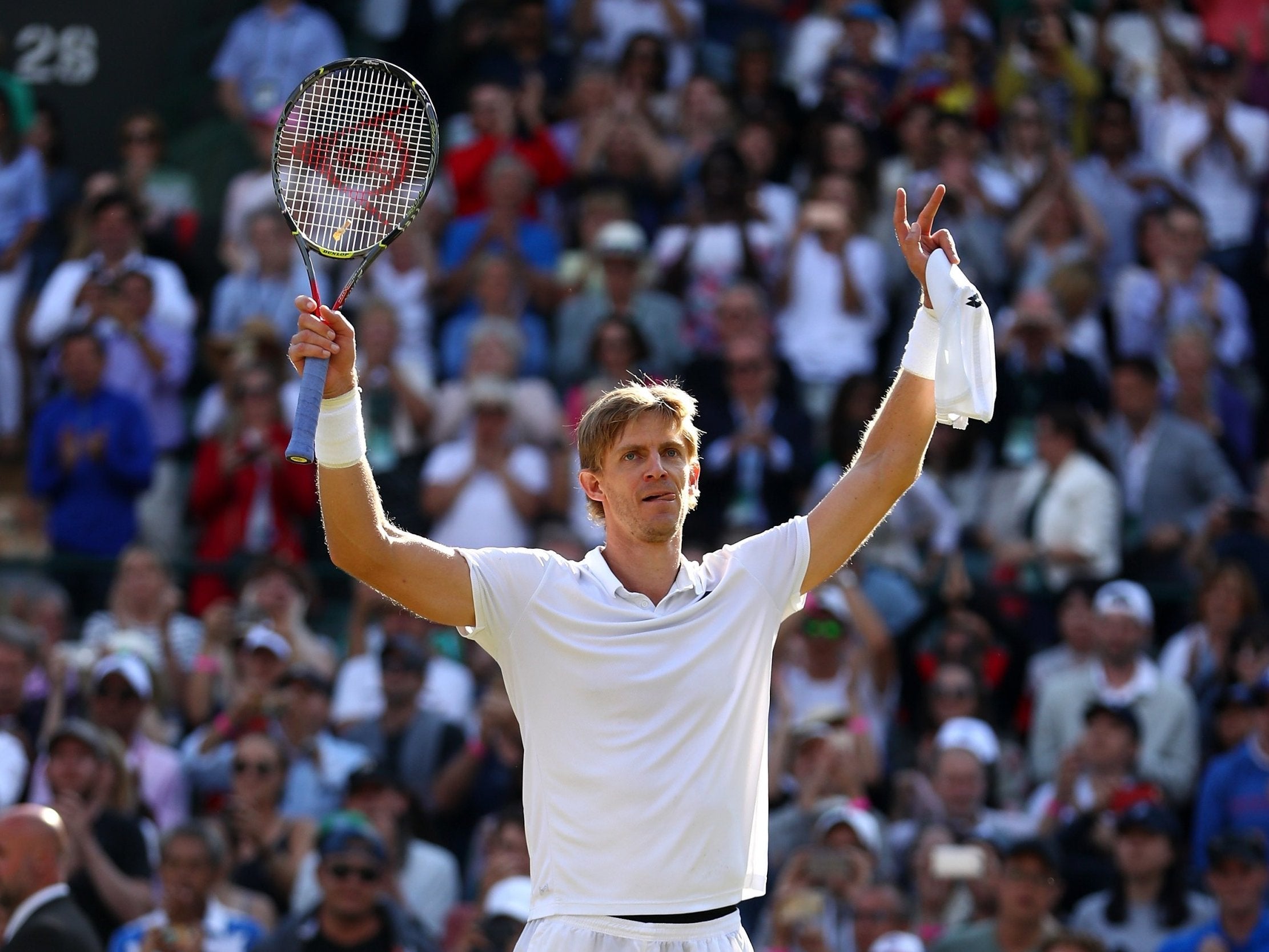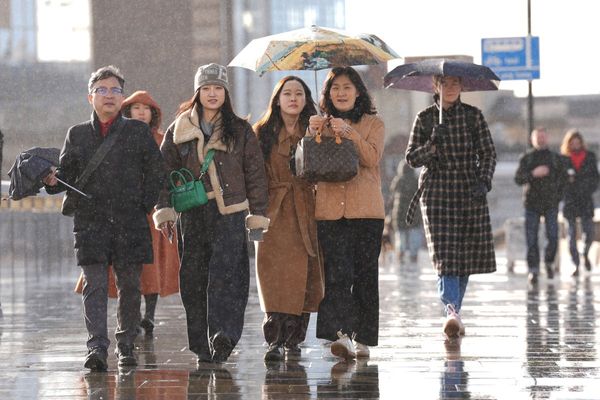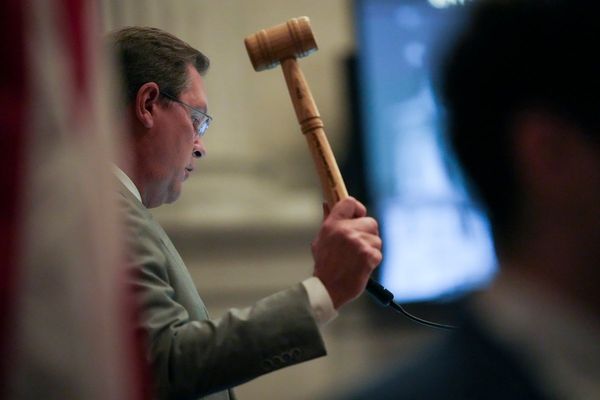No two modern-day players have met in competition as frequently as Rafael Nadal and Novak Djokovic, but when the Spaniard and the Serb square up here on Friday in the Wimbledon semi-finals for the 52nd time there might be plenty that the two men feel they do not know about each other.
With Djokovic playing in his first Grand Slam semi-final for nearly two years, Nadal will be wondering how close his rival is to recapturing the form that brought him 12 Grand Slam titles. Djokovic, meanwhile, might be asking himself whether Nadal still has it in him to complete a French Open-Wimbledon double, which he last achieved eight years ago.
Djokovic leads 26-25 in their head-to-head record, but they have met only twice – and only on clay – in the last two years, Nadal having won in Madrid in 2017 and in Rome two months ago. It is seven years since they met on grass, Djokovic having beaten the Spaniard in the final here to claim the first of his three Wimbledon titles.
The most relevant factor in meeting No 52 is therefore likely to be their most recent form, which might give Nadal the edge. Since recovering from the hip injury he suffered at the Australian Open, Nadal has played 32 matches and won 31 of them. His only defeat was against Dominic Thiem in Madrid early in May.
If Nadal goes on to win this title he will match Bjorn Borg’s record of winning the French Open and Wimbledon in the same year three times. Considering that Nadal had never gone beyond the fourth round here since 2011, it is a remarkable comeback on grass by the 32-year-old Spaniard, who won the title here in 2008 and 2010.
Nadal has had plenty of injury issues of his own over the years, but the world No 1 has never been out of the game for as long as Djokovic was in the wake of his exit from last year’s Wimbledon. The Serb took off the rest of the year to rest a long-term elbow problem, only to be forced to undergo surgery in January.
It was only towards the end of this year’s clay-court season that Djokovic started to look anything like his old self. He reached the quarter-finals of the French Open, made a promising return to grass by making the final at Queen’s Club and has now reached his eighth semi-final here.
“It's different coming into the semi-finals this year, taking in consideration the last 15 months, everything that has happened, and my results that were not up to the standard that I was doing before,” Djokovic said. “At the same time, I'm trying to use the experience and memories that I had on being in the final stages of Grand Slams and just take things very simple, day by day.”

How close does the world No 21 feel he is to being back at his best level? “I think it's pretty close,” he said. “I like the level of tennis that I'm playing right now. I really do. I think with the performances I've had, I deserve to be in the semi-finals. I don't want to stop here.”
Nadal said it was “always a big challenge” to play Djokovic. “You know that you can't win against him if you don't play very well,” he said. “I know that in the semi-finals of Wimbledon you will not have an easy opponent. You have to accept that if you want to win important things. Of course, you will face the best players. You need to be ready for it.”
Asked to compare his style with Djokovic’s, Nadal said their games were “not the same, but we are not very far [apart]”. The Spaniard said he had seen some of Djokovic’s matches here over the last two weeks and thought he was “playing great”.

Kevin Anderson, Roger Federer’s conqueror, faces John Isner in the first of Friday’s semi-finals. Anderson, runner-up at last year’s US Open, had never gone beyond the fourth round here before this year, while Isner’s best previous effort at any Grand Slam event was to reach the quarter-finals at Flushing Meadows in 2011.
“This is by far the best Grand Slam I've ever played in my career,” Isner said. “I'm super happy. To do it here at Wimbledon makes it even a little bit more special.”
It will be Isner’s first experience of Centre Court at the Championships, though he played there in the 2012 Olympics when he lost to Federer in the quarter-finals. “I have no clue what that court looks like,” the 33-year-old American said. “I can't really remember it.”

Isner said he felt “awesome” physically. “I've played very well this whole tournament,” he said. “I've been serving and volleying pretty well. I think I've covered the net well. That's something I've worked on a lot.
“I've had some game plans in each match. I've executed them, I think, almost to perfection. In the big points, this whole tournament, I've been calm and collected and felt like I've played them well.”
Isner has won eight of his 11 tour-level meetings with Anderson, though the last of them was more than three years ago. Their personal history goes back to the days when they played each other in college tennis in the United States.
They are two of the game’s biggest servers. Isner, who stands 6ft 10in tall, has hit 161 aces in his first five matches here and has not had his serve broken once. Anderson, who is 6ft 8in, has hit 123 aces but has dropped serve nine times.

“I think John has got arguably one of the best serves of all time,” 32-year-old Anderson said. “Especially in the last few months what's really impressive is just his first-serve percentage as well, never mind how accurate and big the serve is.”
He added: “In the matches I've played him, obviously taking care of your serve is the first priority. It's a match that's often won on just a couple of points here and there. I feel confident in baseline exchanges with John, but because he's such a big player and has so much firepower, you just can't be too patient. You have to still be aggressive, put him on the back foot.”







